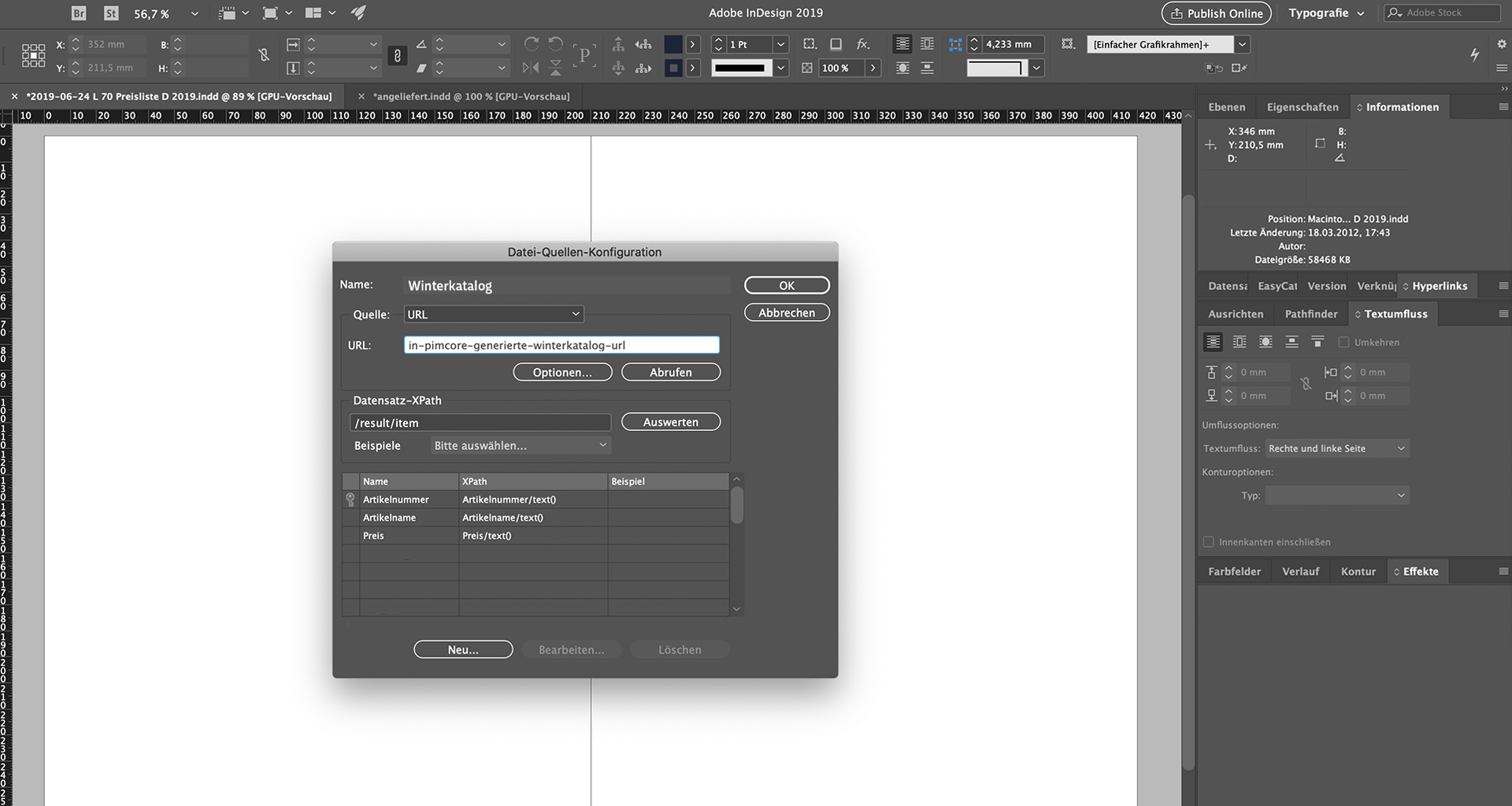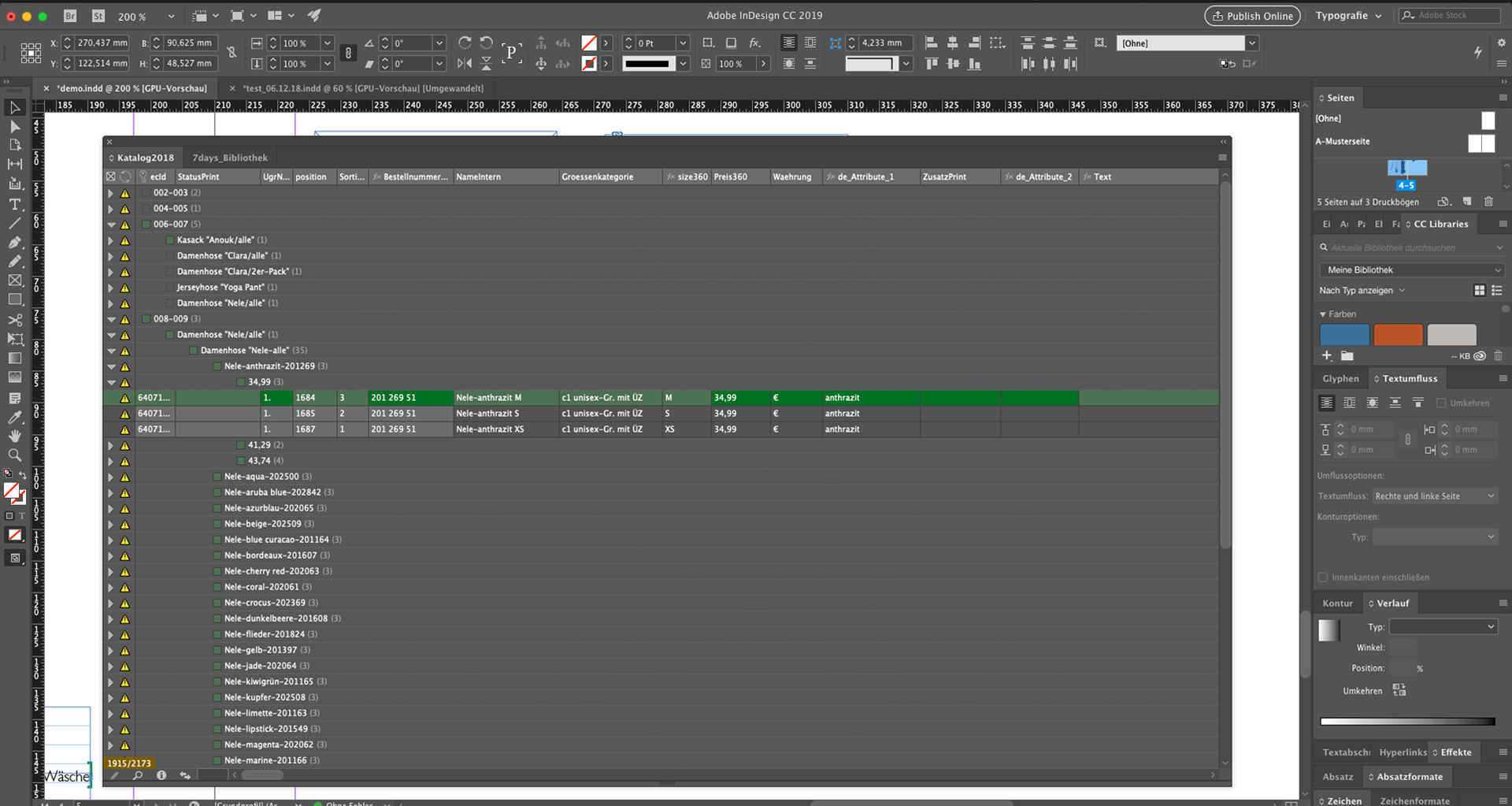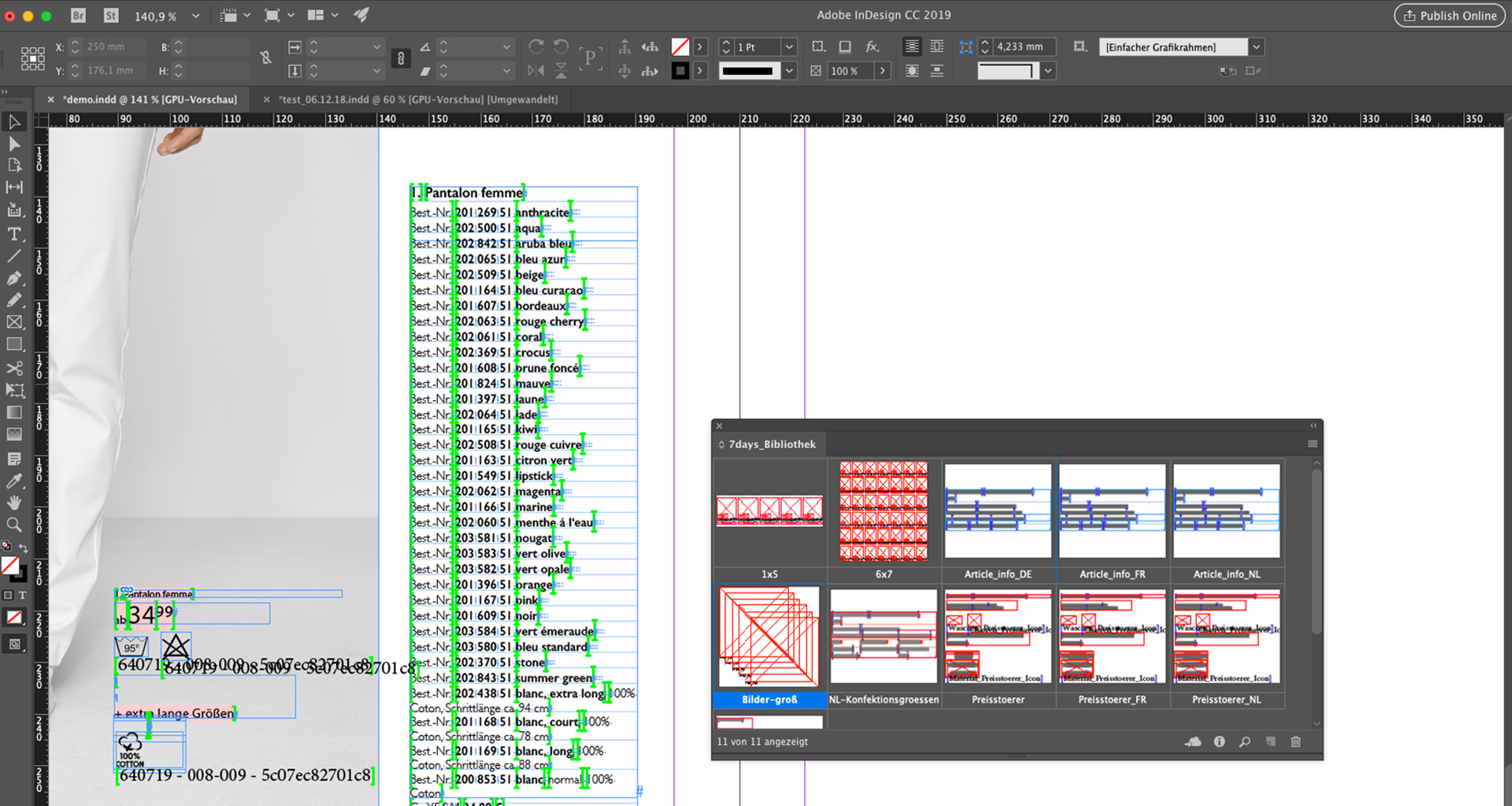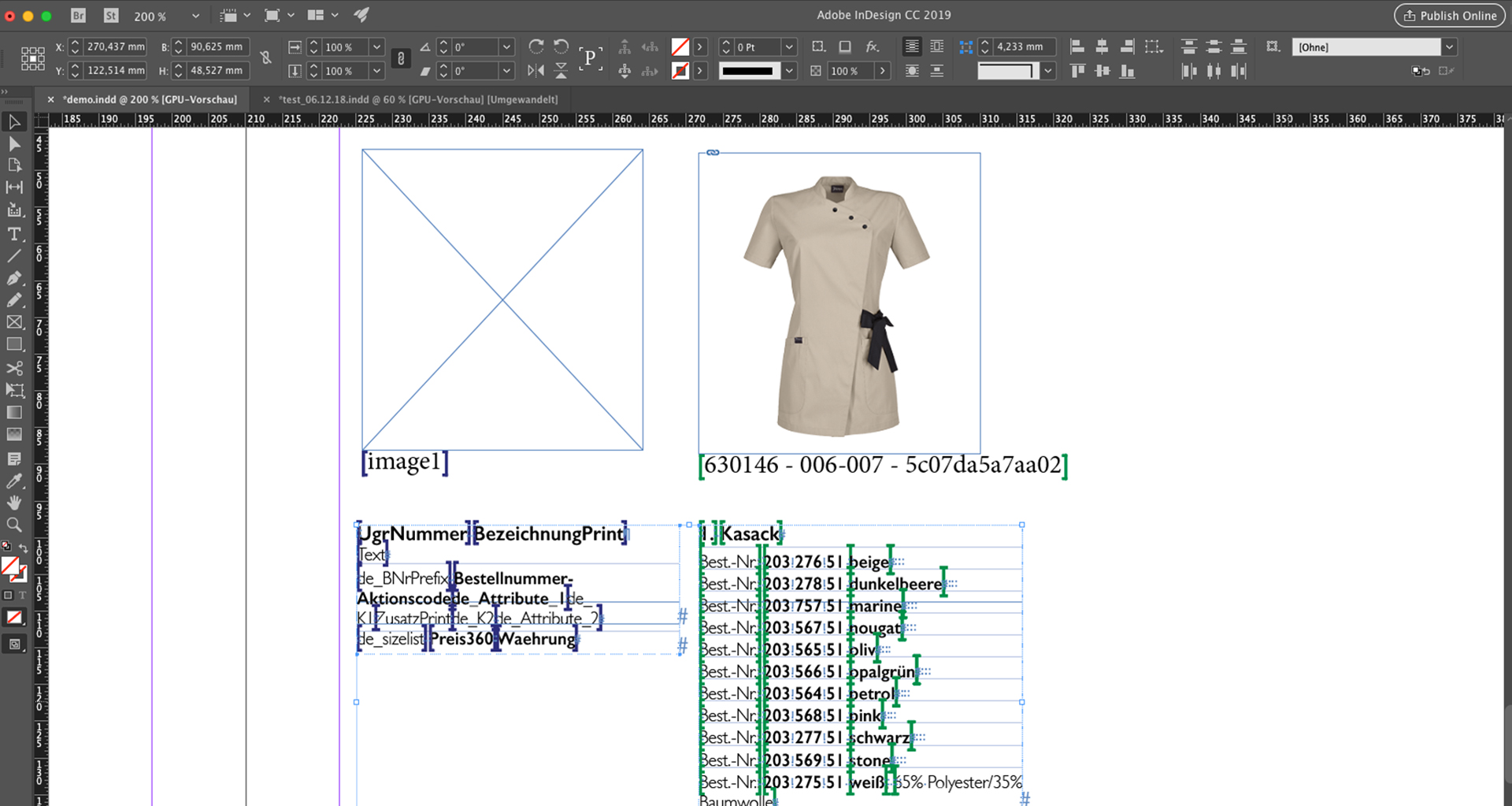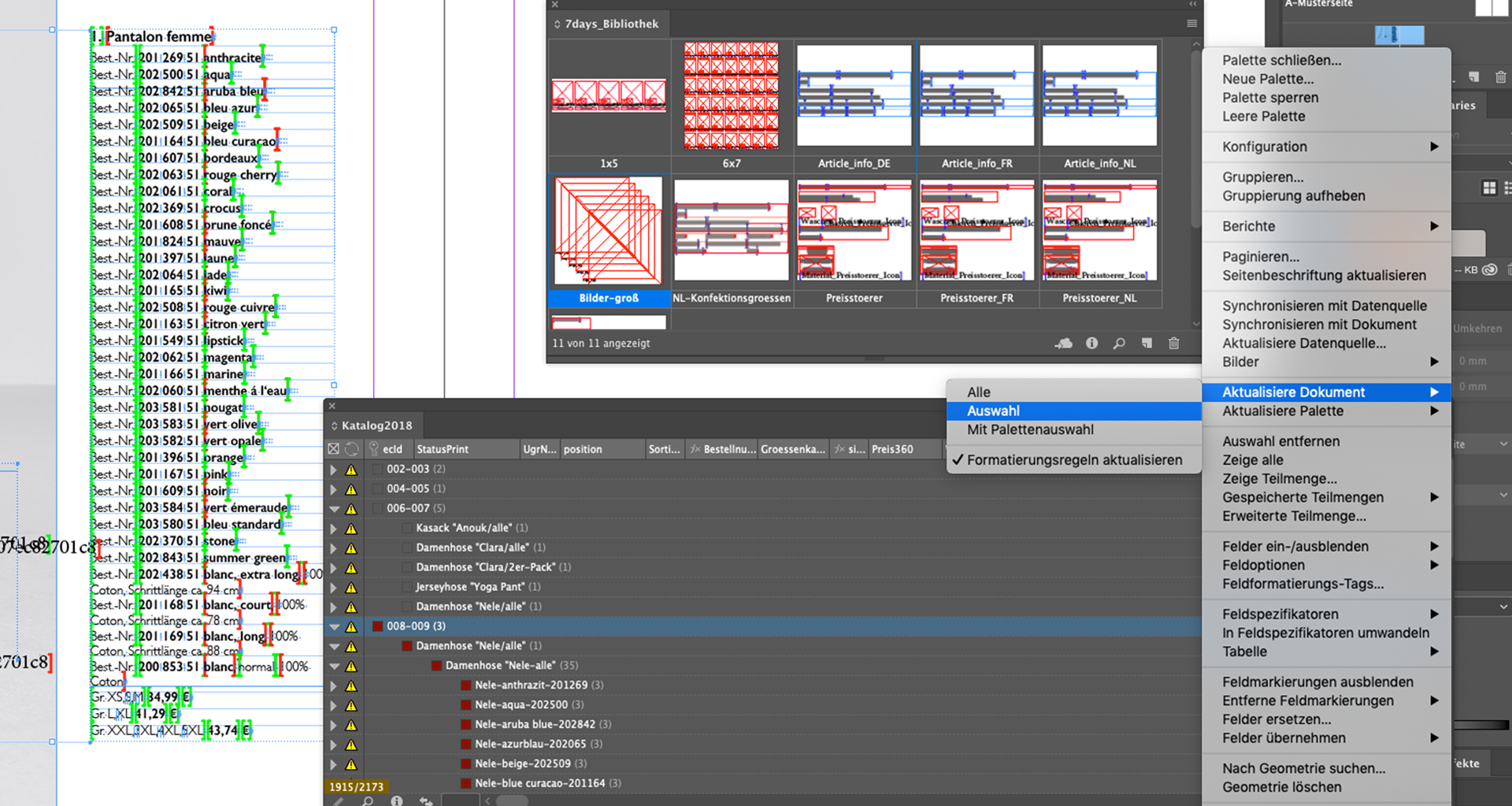EasyCatalog
Automated and database-supported creation of catalogs and price lists using Adobe InDesign

Even in times of online trade, catalogs have their justification and are an important component in the communication mix of high-volume multichannel retailers. Product information must not only be presented in the online shop but also prepared for print catalogs and other publications.
Especially with a wide product range and international, multilingual distribution, catalog creation quickly becomes very time-consuming and expensive.
EasyCatalog allows you to create catalogs, price lists, and other media automatically and database-supported. For example, the layout program Adobe InDesign is connected to a data source such as Pimcore.
Why EasyCatalog? The Advantages at a Glance
Consistent and reliable data: Central, media-neutral data management ensures consistent information across all media.
High up-to-dateness of publications: Even short-term data changes are no problem, as documents are automatically updated at any time.
Time-saving: Automation significantly shortens production times and creates space for additional publications.
Error reduction: An integrity check of documents ensures that the document content matches the source data.
Reduced workload: There is no longer any need for tedious manual gathering, matching, and entering of data.
Cost savings: The significantly lower personnel and time expenditure - also for corrections - ensures significant cost savings.
Database Publishing Made Simple With EasyCatalog
With Blackbit's Data Director, you can connect the popular database publishing software EasyCatalog to Pimcore - automating your print production and creating a wide variety of publications with data from the PIM at the touch of a button.
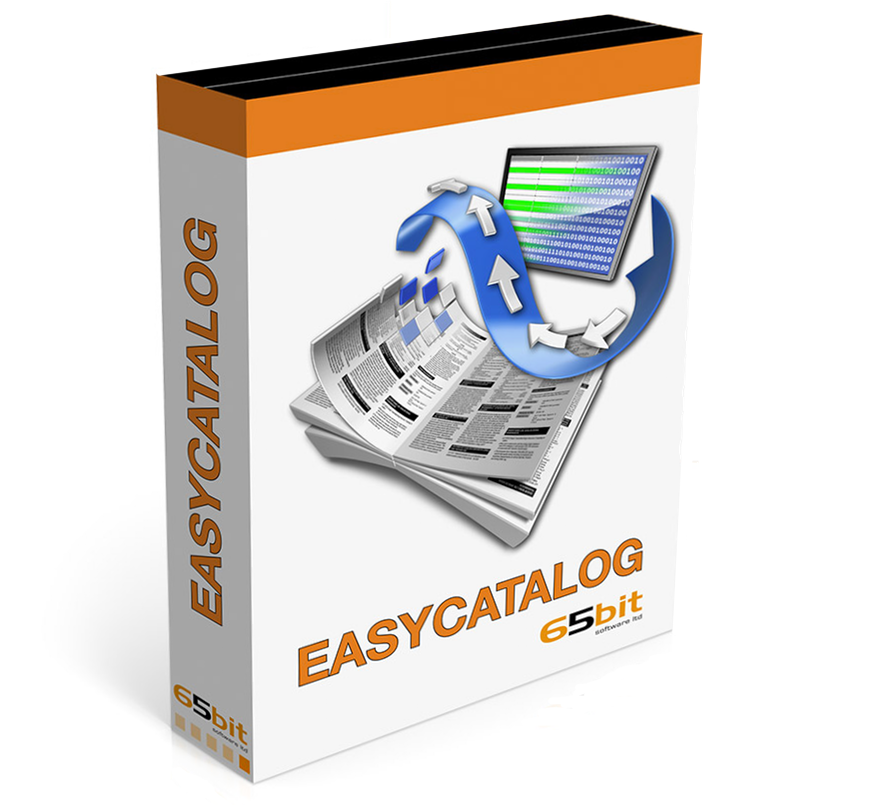
Thousands of users from over thirty countries already rely on EasyCatalog as one of the most powerful and flexible database publishing solutions for Adobe InDesign. The seamless integration of the database publishing tool allows users to work in a familiar InDesign environment.
No programming is necessary to use EasyCatalog. However, a scripting module is available for developers.
After installation, the InDesign plug-in provides you with a table similar to an Excel file as a palette in the layout program. The rows can be sorted and grouped in this table. The placeholders in InDesign can be filled either by drag-and-drop or automatically. If the information in the data source changes, the changes are displayed in InDesign and the document can be updated in a further step.
Automated Catalog Creation in Adobe Indesign
The Most Important EasyCatalog Features
Import data from anywhere: Import data for your catalogs, brochures & co. from a simple Excel, CSV, or text file, an XML file, an ODBC database, or via a URL feed.
Link to the document: By linking your data (texts and images) bi-directionally to the InDesign document, changed content can be synchronized at the touch of a button.
Edit and format data: Common functions such as sorting, grouping, and filtering data can all be done using InDesign without having to switch to your data source.
Create dynamic libraries and document templates: Incorporate placeholders into your templates that are later automatically populated with the live data you want - for creating complex, design-led pages in seconds.
Insert table data: Use the EasyCatalog data palette to specify the order of records and fields and simply click the Insert button - the new InDesign table with linked live data is inserted into your document.
Check for errors: EasyCatalog highlights fields in the document and palette whose contents do not match the original data - avoiding costly errors.
Update document: If data has changed, EasyCatalog intelligently incorporates the new content into your document, taking care to retain any formatting that has been done.
EasyCatalog Modules: Your Database Publishing Grows With You
Another advantage of EasyCatalog is the modular structure of the software. This allows you to put together exactly the functions you currently need and to expand your database publishing solution at any time as required.

In order to use our EasyCatalog integration for Pimcore, you need the XML Data Provider module. This plugin allows you to import XML data from Pimcore directly into EasyCatalog via a URL.
A bi-directional linking of the contents ensures that your data changes in the InDesign document are automatically transferred to the source data or that when the database is updated, the InDesign document is also brought up to date.
Once the XML data has been imported into EasyCatalog, you can edit it in the same way as when importing from an ODBC database or from a delimited file.

You Can Additionally Choose From These EasyCatalog Modules
XML Data Provider: The XML module is needed to connect EasyCatalog to Pimcore via the Data Director. This connection can also be bi-directional so that any changes to the data in Adobe InDesign can be updated back to Pimcore.
ODBC Data Provider: Create a bidirectional connection to your ODBC-compatible database (MySQL, SQL Server, FileMaker, or Oracle) with the ODBC module - ideal for constantly changing databases, as the database does not have to be exported as a file to be imported into EasyCatalog.
Pagination module: Choose from five pagination types and number thousands of pages at the touch of a button - perfect for publications where the data dictates the presentation type.
Enterprise Data Provider: Link EasyCatalog directly to popular systems such as Sales Layer, Adam, Elvis & Salsify - for up-to-the-minute information as often as you like and without complex configurations.
Relational modules: Combine data from different sources into a single EasyCatalog palette. In conjunction with the Pagination module, this allows you to restructure and paginate even the most complex data, such as products with multiple sets of attributes.
EasyCatalog Scripting Module: Use the EasyCatalog advantages via Javascript, AppleScript, or Visual Basic - ideal for integrating EasyCatalog into your individual workflow.
Blackbit - Your Experienced Partner in Database Publishing
The Blackbit team will help you find and implement a database publishing solution that exactly matches the requirements of your company and your publication channels.
This way, print catalogs can be created cost-efficiently, websites can be updated automatically, data can be made available to customers in industry-dependent or -independent exchange formats, and e-commerce applications can be supplied with information.

Case Study 7days Marc Staperfeld GmbH: PIM system with product data extraction for online shop and print catalogues
Read how Blackbit enabled production planning directly in pimcore, which is more convenient and less time-consuming than that in EasyCatalog itself. The InDesign templates created by Blackbit enable 7days to design and publish the pages easily and independently.

